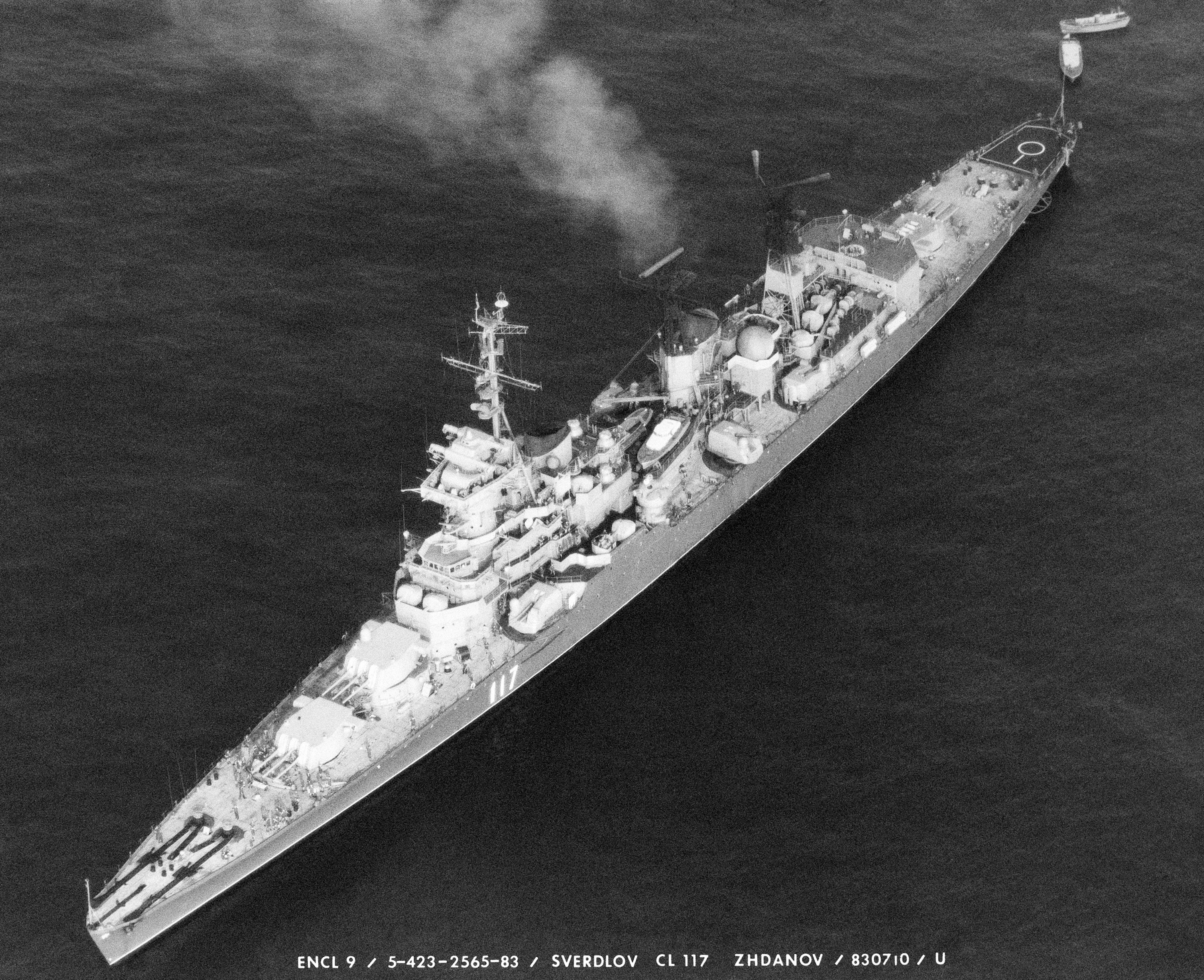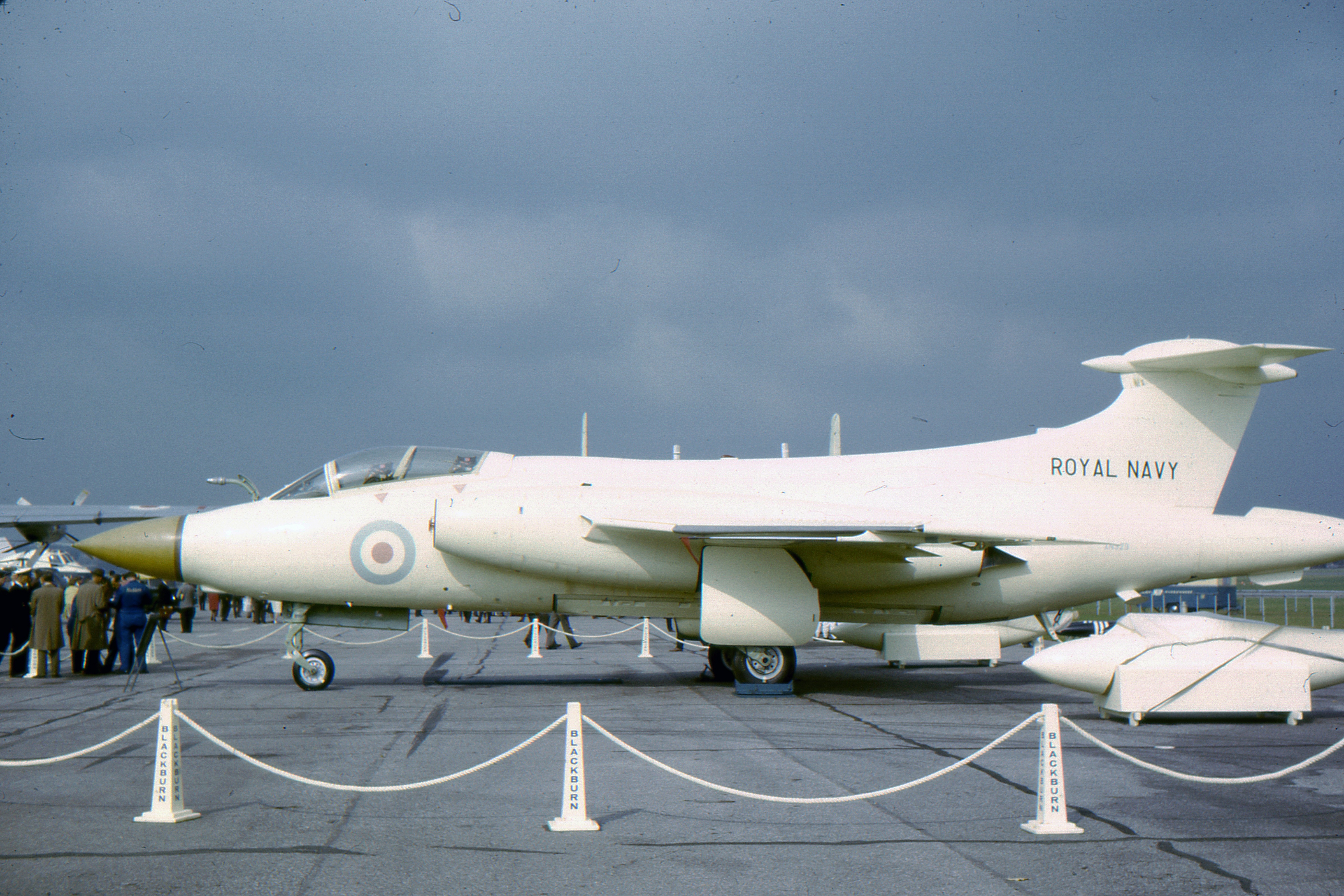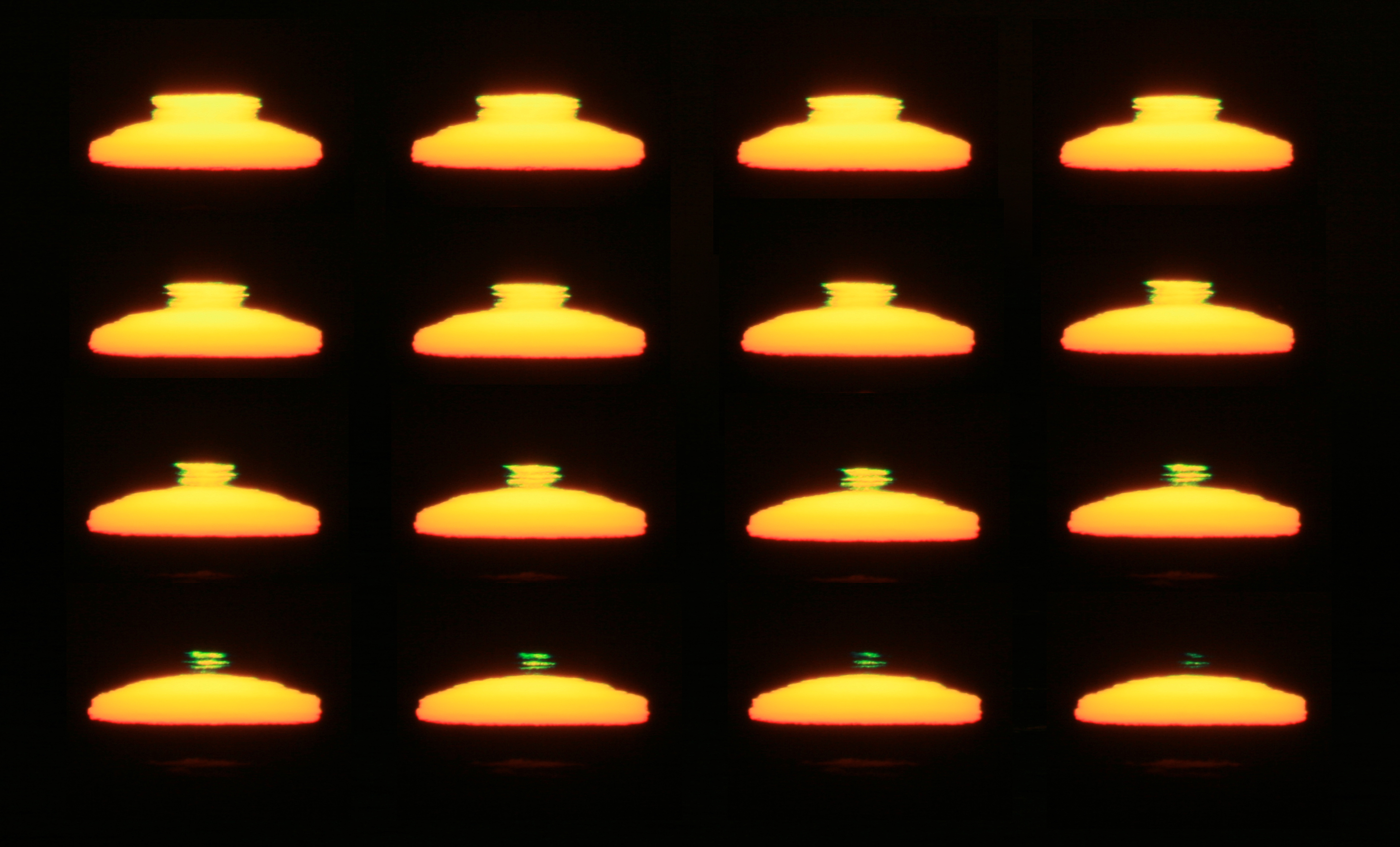|
Green Cheese (missile)
Green Cheese was a British-made radar-guided anti-ship tactical nuclear warhead missile project of the 1950s. Green Cheese arose as part of the ' ''Sverdlov'' crisis', when the Royal Navy were concerned over the appearance of a new Soviet heavy cruiser class. It was a longer-ranged and guided replacement for the unguided Red Angel, which had required an approach by the attacker too close to be considered survivable. It was developed by Fairey Aviation to be used by the Fairey Gannet shipborne anti-submarine warfare aircraft, and was originally called Fairey Project 7. However, the missile's 3,800 lb (1720 kg) weight proved to be too heavy for the Gannet, and would have required modifications to the Gannet's bomb bay to expose the missiles' seeker heads to the target before launch. The missile project continued, since the Blackburn Buccaneer naval strike aircraft had a rotating bomb bay which was ideally suited to the task. The project was cancelled in 1956 due in par ... [...More Info...] [...Related Items...] OR: [Wikipedia] [Google] [Baidu] |
Fairey Gannet
The Fairey Gannet is a carrier-borne aircraft that was designed and produced by the British aircraft manufacturer the Fairey Aviation Company. It was developed for the Royal Navy, being the first fixed-wing aircraft to combine both the search and strike portions of anti-submarine warfare (ASW) operations to be operated by the Fleet Air Arm (FAA). The Gannet was originally developed to meet a Second World War era requirement for a dual-role ASW and strike to equip the FAA.Taylor 1974, pp. 356–357. It was a mid-wing monoplane with a tricycle undercarriage and a crew of three, with a double turboprop engine driving two contra-rotating propellers. On 19 September 1949, the prototype Gannet performed its maiden flight. Four years later, it was brought into regular service with the FAA. The service would use the type from the majority of its aircraft carriers throughout the Cold War. Various export customers were also secured for the Gannet, including the Royal Australian Navy, the G ... [...More Info...] [...Related Items...] OR: [Wikipedia] [Google] [Baidu] |
Fairey Aviation Company
The Fairey Aviation Company Limited was a British aircraft manufacturer of the first half of the 20th century based in Hayes in Middlesex and Heaton Chapel and RAF Ringway in Cheshire. Notable for the design of a number of important military aircraft, including the Fairey III family, the Swordfish, Firefly, and Gannet, it had a strong presence in the supply of naval aircraft, and also built bombers for the RAF. After World War II the company diversified into mechanical engineering and boat-building. The aircraft manufacturing arm was taken over by Westland Aircraft in 1960. Following a series of mergers and takeovers, the principal successor businesses to the company now trade as FBM Babcock Marine Ltd, Spectris plc, and WFEL (formerly Williams Fairey Engineering Limited), the latter manufacturing portable bridges. History Founded in 1915 by Charles Richard Fairey (later Sir Richard Fairey) and Belgian engineer Ernest Oscar Tips on their departure from Short Brothers, the ... [...More Info...] [...Related Items...] OR: [Wikipedia] [Google] [Baidu] |
Radar
Radar is a detection system that uses radio waves to determine the distance (''ranging''), angle, and radial velocity of objects relative to the site. It can be used to detect aircraft, ships, spacecraft, guided missiles, motor vehicles, weather formations, and terrain. A radar system consists of a transmitter producing electromagnetic waves in the radio or microwaves domain, a transmitting antenna, a receiving antenna (often the same antenna is used for transmitting and receiving) and a receiver and processor to determine properties of the objects. Radio waves (pulsed or continuous) from the transmitter reflect off the objects and return to the receiver, giving information about the objects' locations and speeds. Radar was developed secretly for military use by several countries in the period before and during World War II. A key development was the cavity magnetron in the United Kingdom, which allowed the creation of relatively small systems with sub-meter resolution. Th ... [...More Info...] [...Related Items...] OR: [Wikipedia] [Google] [Baidu] |
Anti-ship Missile
An anti-ship missile (AShM) is a guided missile that is designed for use against ships and large boats. Most anti-ship missiles are of the sea skimming variety, and many use a combination of inertial guidance and active radar homing. A good number of other anti-ship missiles use infrared homing to follow the heat that is emitted by a ship; it is also possible for anti-ship missiles to be guided by radio command all the way. The first anti-ship missiles, which were developed and built by Nazi Germany, used radio command guidance.https://airandspace.si.edu/collection-objects/bomb-guided-fritz-x-x-1/nasm_A19840794000#:~:text=The%20Fritz%20X%2C%20also%20known,the%20Henschel%20Hs%20293%20missile. These saw some success in the Mediterranean Theatre during 1943–44, sinking or heavily damaging at least 31 ships with the Henschel Hs 293 and more than seven with the ''Fritz X'', including the Italian battleship ''Roma'' and the light cruiser . A variant of the HS 293 had a TV ca ... [...More Info...] [...Related Items...] OR: [Wikipedia] [Google] [Baidu] |
Nuclear Warhead
A nuclear weapon is an explosive device that derives its destructive force from nuclear reactions, either fission (fission bomb) or a combination of fission and fusion reactions (thermonuclear bomb), producing a nuclear explosion. Both bomb types release large quantities of energy from relatively small amounts of matter. The first test of a fission ("atomic") bomb released an amount of energy approximately equal to . The first thermonuclear ("hydrogen") bomb test released energy approximately equal to . Nuclear bombs have had yields between 10 tons TNT (the W54) and 50 megatons for the Tsar Bomba (see TNT equivalent). A thermonuclear weapon weighing as little as can release energy equal to more than . A nuclear device no larger than a conventional bomb can devastate an entire city by blast, fire, and radiation. Since they are weapons of mass destruction, the proliferation of nuclear weapons is a focus of international relations policy. Nuclear weapons have been deployed ... [...More Info...] [...Related Items...] OR: [Wikipedia] [Google] [Baidu] |
Sverdlov-class Cruiser
The ''Sverdlov''-class cruisers, Soviet designation Project 68bis, were the last conventional gun cruisers built for the Soviet Navy. They were built in the 1950s and were based on Soviet, German, and Italian designs and concepts developed prior to the Second World War. They were modified to improve their sea keeping capabilities, allowing them to run at high speed in the rough waters of the North Atlantic. The basic hull was more modern and had better armor protection than the vast majority of the post World War II gun cruiser designs built and deployed by peer nations. They also carried an extensive suite of modern radar equipment and anti-aircraft artillery. The Soviets originally planned to build 40 ships in the class, which would be supported by the s and aircraft carriers. This class of cruiser satisfied the desire of Stalin, and of the leadership within the Soviet Navy, for a ship that was in keeping with a Naval doctrine focused on three priorities: supporting the defens ... [...More Info...] [...Related Items...] OR: [Wikipedia] [Google] [Baidu] |
Red Angel (rocket)
Red Angel was an anti-ship rocket developed for the Royal Navy. The name was one of the British rainbow codes. RP-3 ("Three-inch") rockets were used successfully for anti-shipping attacks during World War II. Larger unguided rockets were developed at the end of the war, such as the 'Uncle Tom' to meet Operational Requirement OR.1009. This used six of the three-inch (76 mm) rocket motors in a airframe of diameter. Around 1950 the new ''Sverdlov''-class cruisers caused concern in the Royal Navy, over the fear that the Soviet Navy was expanding into a wide-ranging blue water navy. A new weapon, Red Angel, was developed to meet this threat. This was larger than Uncle Tom and had a warhead intended to attack the deck armour of ''Sverdlovs''. A salvo of six hits was thought to be sufficient to disable a ''Sverdlov''. Red Angel was long and in diameter. Overall weight was with an warhead. Like Uncle Tom it had flip-out rear fins, but Tom's four large fins were replaced by six small ... [...More Info...] [...Related Items...] OR: [Wikipedia] [Google] [Baidu] |
Fairey Aviation
The Fairey Aviation Company Limited was a British aircraft manufacturer of the first half of the 20th century based in Hayes in Middlesex and Heaton Chapel and RAF Ringway in Cheshire. Notable for the design of a number of important military aircraft, including the Fairey III family, the Swordfish, Firefly, and Gannet, it had a strong presence in the supply of naval aircraft, and also built bombers for the RAF. After World War II the company diversified into mechanical engineering and boat-building. The aircraft manufacturing arm was taken over by Westland Aircraft in 1960. Following a series of mergers and takeovers, the principal successor businesses to the company now trade as FBM Babcock Marine Ltd, Spectris plc, and WFEL (formerly Williams Fairey Engineering Limited), the latter manufacturing portable bridges. History Founded in 1915 by Charles Richard Fairey (later Sir Richard Fairey) and Belgian engineer Ernest Oscar Tips on their departure from Short Brothers, the ... [...More Info...] [...Related Items...] OR: [Wikipedia] [Google] [Baidu] |
Pound (mass)
The pound or pound-mass is a unit of mass used in British imperial and United States customary systems of measurement. Various definitions have been used; the most common today is the international avoirdupois pound, which is legally defined as exactly , and which is divided into 16 avoirdupois ounces. The international standard symbol for the avoirdupois pound is lb; an alternative symbol is lbm (for most pound definitions), # ( chiefly in the U.S.), and or ″̶ (specifically for the apothecaries' pound). The unit is descended from the Roman (hence the abbreviation "lb"). The English word ''pound'' is cognate with, among others, German , Dutch , and Swedish . These units are historic and are no longer used (replaced by the metric system). Usage of the unqualified term ''pound'' reflects the historical conflation of mass and weight. This accounts for the modern distinguishing terms ''pound-mass'' and '' pound-force''. Etymology The word 'pound' and its cognates ultim ... [...More Info...] [...Related Items...] OR: [Wikipedia] [Google] [Baidu] |
Blackburn Buccaneer
The Blackburn Buccaneer is a British carrier-capable attack aircraft designed in the 1950s for the Royal Navy (RN). Designed and initially produced by Blackburn Aircraft at Brough, it was later officially known as the Hawker Siddeley Buccaneer when Blackburn became a part of the Hawker Siddeley Group, but this name is rarely used. The Buccaneer was originally designed in response to the Soviet Union's ''Sverdlov''-class cruiser construction programme. Instead of building a new fleet of its own, the Royal Navy could use the Buccaneer to attack these ships by approaching at low altitudes below the ship's radar horizon. The Buccaneer could attack using a nuclear bomb, or conventional weapons. It was later intended to carry short-range anti-shipping missiles to improve its survivability against more modern ship-based anti-aircraft weapons. The Buccaneer entered Royal Navy service in 1962. The initial production aircraft suffered a series of accidents due to insufficient engine ... [...More Info...] [...Related Items...] OR: [Wikipedia] [Google] [Baidu] |
Robert Cockburn (physicist)
Sir Robert Cockburn ( ; 31 March 1909 – 21 March 1994) was a British physicist who played an important role in the field of electronic countermeasures for the RAF in the defence of Britain during the Second World War. Education Born in Portsmouth, Cockburn was educated at Southern Secondary School for Boys and Portsmouth Municipal College. He studied at the University of London while working as a science teacher at the West Ham Municipal College, and completed his PhD in 1939. Royal Aircraft Establishment In 1937 Cockburn took up a research post at the Royal Aircraft Establishment, Farnborough, a part of the Air Ministry. Here he worked on the ground-to-air VHF communication system that was used to good effect by RAF Fighter Command during the Battle of Britain. Radio Countermeasures In 1940, Cockburn was assigned to the Telecommunications Research Establishment near Swanage, where he set up and headed a team to work on radio countermeasures - the Battle of ... [...More Info...] [...Related Items...] OR: [Wikipedia] [Google] [Baidu] |
Green Flash (missile)
The green flash and green ray are meteorological optical phenomena that sometimes occur transiently around the moment of sunset or sunrise. When the conditions are right, a distinct green spot is briefly visible above the Sun's upper limb; the green appearance usually lasts for no more than two seconds. Rarely, the green flash can resemble a green ray shooting up from the sunset or sunrise point. Green flashes occur because the Earth's atmosphere can cause the light from the Sun to separate, or refract, into different colors. Green flashes are a group of similar phenomena that stem from slightly different causes, and therefore, some types of green flashes are more common than others. Observing Green flashes may be observed from any altitude. They usually are seen at an unobstructed horizon, such as over the ocean, but are possible over cloud tops and mountain tops as well. They may occur at any latitude, although at the equator, the flash rarely lasts longer than a ... [...More Info...] [...Related Items...] OR: [Wikipedia] [Google] [Baidu] |


.jpg)




